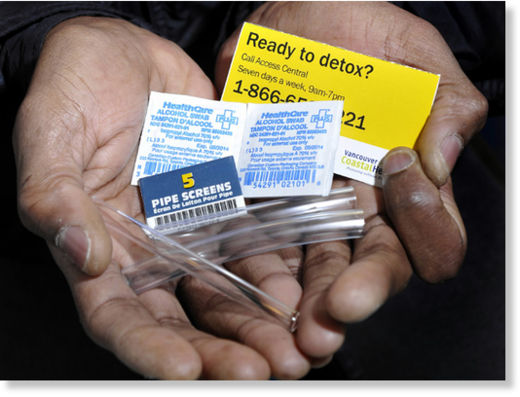
Part of a $60,000 trial project first announced in August, the pipes are just one piece of drug paraphernalia found inside kits that have been distributed to users in the area since the beginning of the month. The glass pipes are heat-resistant and shatterproof, which experts say should reduce injury to the users' lips and mouth - wounds that can make them more susceptible to diseases such as HIV and Hepatitis B and C.
Also included are mouthpieces, filters, alcohol swabs, screens and push sticks.
While harm-reduction tools such as these have been made available to addicts in the past, this marks the first time they have been combined in a single kit, explained Trudi Beutel, a spokesperson for the health authority.
In total, 60,000 kits are expected to be distributed through five different Downtown Eastside harm reduction centres over the duration of the eight-month trial period.
"What this boils down to is it's about disease prevention," said Beutel. "It's about preventing more communicable diseases which land these people in hospital on a frequent basis and clogs up emergency rooms."
Hugh Lampkin, the president of Vancouver Area Network of Drug Users, estimated that his organization, which puts the kits together is handing out an average of 70-90 kits a day.
He said the ratio of users has been roughly 65% male and 35% female, with their ages running anywhere from 20 to 65 years old.
At present, he said VANDU has been following a one pipe per day policy.
"I think what this is doing right now is starting a dialogue about crack smoking," he said of the project, which has been criticized. "And asking what is the best way to combat this drug problem?"
The B.C.-based director of the Drug Prevention Network of Canada offered a far less optimistic opinion.
"Programs like this ignore the problems of addiction," said David Brener. "All this does is aid and abet. What we should do is put that same amount of money into treatment and prevention. Because treatment and prevention work."
Source: PostMedia News



Reader Comments
to our Newsletter